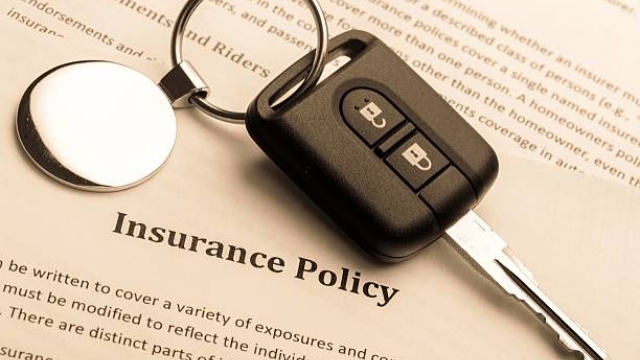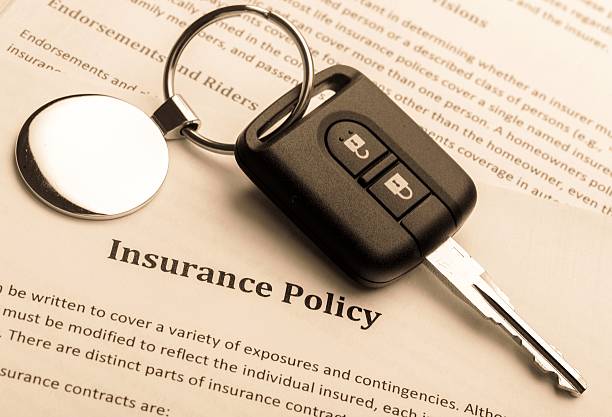
Insider Tips: Mastering the Maze of Car Insurance
Ryan Flores -Car insurance can often seem like an intricate maze, with its complex terms and bewildering array of coverage options. Whether you’re a seasoned driver or a newbie on the road, understanding the ins and outs of car insurance is crucial for protecting yourself and your vehicle. In this article, we will delve into the world of car insurance, breaking down what it is and unraveling the intricacies of this essential financial safeguard. So, buckle up and get ready to navigate the twists and turns of car insurance with ease.
When it comes to car insurance, the first question that may come to mind is, “What exactly is car insurance?” Simply put, car insurance is a contract between you and an insurance company that provides financial protection in the event of an accident, theft, or any damage to your vehicle. It is a legal requirement in many countries and can offer peace of mind as you hit the road. However, car insurance is not just a one-size-fits-all solution. There are various types of coverage to consider, such as liability, collision, comprehensive, and more. Each type offers different levels of protection and comes at a different cost. Understanding these options is crucial to ensure you have the coverage you need without paying for unnecessary extras.
Now that we have a basic understanding of what car insurance is, let’s dive deeper into the intricacies of coverage, premiums, deductibles, and other key components that can significantly impact your insurance experience. Mastering the maze of car insurance is not only about finding the right coverage but also about exploring ways to save money, understanding the factors that influence insurance premiums, and knowing how to make the most of your policy. Furthermore, we will provide insider tips and expert advice to help you navigate the ever-changing landscape of car insurance, ensuring that you are well-equipped to make informed decisions that suit your needs and budget. So, let’s embark on this journey together and become a savvy explorer in the world of car insurance.
Understanding Car Insurance
Car insurance is a vital protection plan that every car owner should have. It provides financial coverage in case of damages, accidents, or theft of your vehicle. Car insurance policies vary depending on the type of coverage you choose, but they generally include liability coverage, comprehensive coverage, and collision coverage.
Liability coverage is the most basic form of car insurance. It helps pay for damages and injuries you may cause to others in an accident. This coverage is required by law in most states, and the amount of coverage you need may vary depending on where you live. Liability coverage typically does not cover damages to your own vehicle or medical expenses for yourself or your passengers.
Comprehensive coverage, on the other hand, helps cover damages to your car that are caused by factors other than collisions. This includes natural disasters, vandalism, theft, or falling objects. It provides a broader level of protection and can be helpful if you live in an area prone to severe weather conditions or high rates of theft.
Collision coverage is designed to cover damages to your own vehicle in the event of a collision with another car or object. Whether you’re at fault or not, if your vehicle is damaged due to a collision, this coverage can help pay for the repairs or replacement.
Understanding the different types of car insurance coverage is crucial to ensure you have the right protection for your specific needs. Before purchasing car insurance, it’s important to compare quotes from different insurance companies and carefully review the policy terms and conditions.
Types of Car Insurance Coverage
Car insurance coverage is categorized into various types, each offering different levels of protection. Understanding these types can help you choose the right coverage for your needs. Here are some of the common types of car insurance:
-
Liability insurance: This type of coverage is mandatory in most states. It provides financial protection if you are held responsible for causing injury or property damage to others in an accident. Liability insurance typically includes two components: bodily injury liability and property damage liability.
-
Collision insurance: This coverage helps pay for the damage to your own vehicle in case of a collision with another vehicle or object. It is particularly useful if you have a newer car or a vehicle that holds significant value.
-
Comprehensive insurance: Comprehensive coverage protects you from non-collision incidents such as theft, vandalism, natural disasters, and falling objects. It provides financial protection for damages to your vehicle that are not caused by a collision.
Each of these types of car insurance coverage offers a specific level of protection against different risks. It’s important to evaluate your needs and consider factors such as the age and value of your vehicle, your budget, and legal requirements when selecting the right coverage for you.
Choosing the Right Car Insurance Policy
When it comes to choosing the right car insurance policy, there are a few key factors you should consider. First and foremost, it’s important to assess your individual needs and prioritize the coverage options that matter most to you.
Start by understanding the types of car insurance available to you. Liability insurance is typically required by law and covers any bodily injury or property damage you may cause. Comprehensive insurance, on the other hand, protects your own vehicle against theft, vandalism, or damage caused by natural disasters.
Next, consider the deductible amount that works best for your financial situation. Deductibles are the amount you pay out of pocket before your insurance coverage kicks in. While opting for a higher deductible can lower your premium, make sure it’s an amount you can comfortably afford in case of an accident.
Another crucial aspect to consider is the coverage limits of the policy. This refers to the maximum amount your insurance provider will pay for a claim. Ensure that the coverage limits are adequate to protect both yourself and your vehicle in the event of an accident or damage.
Lastly, but certainly not least, it’s essential to review the reputation and customer service of the insurance company. Look for a provider that has a track record of prompt claims processing and excellent customer support. Reading reviews and seeking recommendations from trusted sources can help you make an informed decision.
Remember, choosing the right car insurance policy is a personal decision that depends on your unique circumstances. Taking the time to carefully assess your needs and compare different options will help ensure you find the policy that offers the right coverage at the best value.
You may also like
Archives
- December 2025
- November 2025
- October 2025
- September 2025
- August 2025
- July 2025
- June 2025
- May 2025
- April 2025
- March 2025
- February 2025
- January 2025
- December 2024
- March 2024
- February 2024
- January 2024
- December 2023
- November 2023
- October 2023
- September 2023
- August 2023
- July 2023
- June 2023
- May 2023
- April 2023
- March 2023
- February 2023
- January 2023
- December 2022
- November 2022
- October 2022
- September 2022
- August 2022
- July 2022
- June 2022
- May 2022
- April 2022
- March 2022
- February 2022
- January 2022
